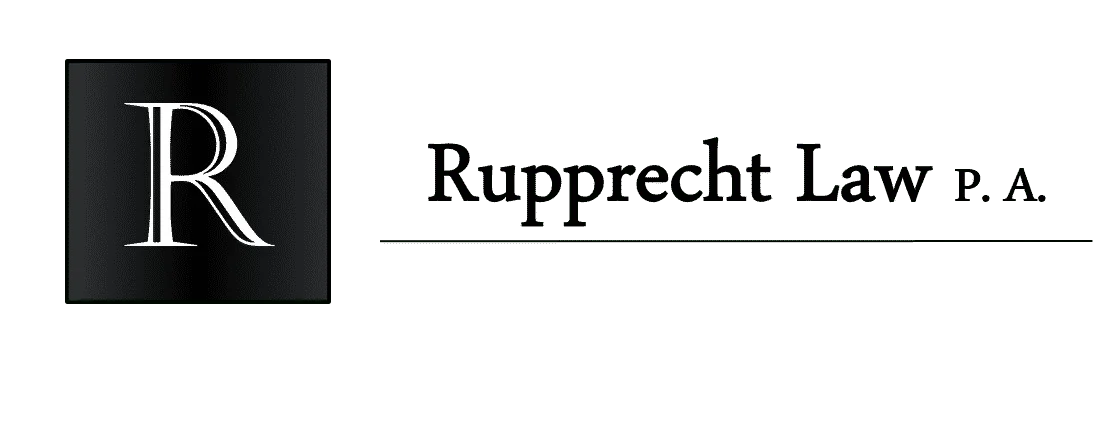|
Getting your Trinity Audio player ready...
|
Are you interested in learning more about the FAA drone Part 107 waivers and authorizations for drone flying?
Yes, I know this can be super confusing. As a practicing drone attorney, I have found that the FAA and industry have been sloppy with how they use the terms which creates all sorts of apparent contradictions and also sends people on wild goose chases in trying to find answers. Let’s fix that. :)
Waivers and authorizations are essential to allowing unique operations to get airborne in the national airspace. This article will talk about (1) why FAA Part 107 waivers and authorizations were created, (2) what regulations can be waived, and (3) what to do when you can’t obtain a waiver regulation.
The FAA understands that not everything will fall neatly into the set of the FAA Part 107 regulations which is why they created the FAA Part 107 waivers and authorizations. Sometimes things fall outside of the “box,” but still need to be made safe and legal. The FAA builds into the regulations what is called “regulatory flexibility” which can be understood as legal “wiggle room.”
There are multiple ways that regulatory flexibility can happen in the regulations: FAA Part 107 waivers, authorizations, deviations, and exemptions. If the particular regulation you are interested in cannot be resolved by an FAA Part 107 waiver, authorization, or deviation, then the exemption process is all that is left.
The FAA has wisely built into Part 107 Section 107.205 that lists out what regulations can be waived under an FAA Part 107 waiver. An individual applies to the FAA for a certificate of waiver (COW) asking for certain regulations to be waived during the proposed operations. If the FAA believes the applicant has shown the operations are safe enough, the applicant will be given an FAA Part 107 waiver from a particular regulation and the applicant now operates under the certificate of waiver’s restrictions in addition to the regulation waived.
One thing that confuses people is the whole authorization and FAA Part 107 waiver situation. Some regulations are authorizable, such as 107.41, while others are waivable. Sometimes there is overlap and some regulations are both authorizable and waivable just like with 107.41. (Basically, a waiver from 107.41 is a waiver to not get an authorization.) You might have heard of airspace certificates of authorizations (COA) or airspace certificate of waivers (COW). Functionally, they do the same thing and allow you to fly in a place you could not fly before but there are technical issues on the backend such as standards of review, who is reviewing, what is needed to be filed, etc. A competent drone attorney can help pick which one is best for your situation.
The only regulation authorizable in Part 107 is 107.41. Section 107.205 lists out specifically what regulations are waivable. Below are the waivable regulations and examples of operations that would need this type of FAA Part 107 waiver. If you are interested in any type of operation in either list below, please contact me to help you obtain an FAA Part 107 waiver.
Table of Contents of Article
FAA Part 107 Waivers
- 107.25 – Operation from a moving vehicle, boat, or aircraft.
- Operating a drone from a moving aircraft.
- Powerline inspection in populated areas.
- Pipeline inspection in populated areas.
- Cinematography or car commercials for TV in populated areas.
- 107.29(a)(2) and (b)—Anti-collision light required for operations at night and during periods of civil twilight. Note: you can fly at night but some operations cannot easily comply such as:
- Drone light shows. Yes. 107.29 doesn’t allow you to turn off the lights completely. So if you want a completely lights off drone show, you need a 107.29 waiver.
- Law enforcement cannot use a blinking light when chasing the bad guy. They want it off but 107.29 requires a blinking light.
- FPV racing is limited in what payloads they can carry and would need a waiver to fly at night without an anti-collision light.
- 107.31 – Visual line of sight aircraft operation.
- Beyond visual line of sight operations for mapping, agriculture, search and rescue (but none of these are package delivery of another person’s property.)
- FPV racing commercially WITHOUT a visual observer.
- 107.33 – Visual observer.
- 107.35 – Operation of multiple small unmanned aircraft systems.
- The pilot in command wants to fly two or more drones at the same time.
- Swarming drones for entertainment like Intel and Disney are interested in. See my drone light show article for ideas and greater discussion.
- 107.37(a) – Yielding the right of way.
- Your drone may be extremely unmanueverable. But at that point, you might just want to be a balloon and fly under Part 101 and not be considered an unmanned aircraft?
- 107.39 – Operation over people. Note: the FAA changed the rules that some aircraft can fly over people but there may be weird situations where you still need a waiver.
- Flying a sub 250 gram drone without prop guards.
- Flying a heavy drone which cannot reach 25 ft/pound energy thresholds but you mitigate by lowering likelihood down to acceptable limits.
- Flying over moving vehicles persistently.
- 107.41 – Operation in certain airspace.
- Flying in Class B, C, D, or E2 airspace which is always associated with an airport.
- 107.51 – Operating limitations for small unmanned aircraft.
- Flying higher than 400ft.
- Faster than 100MPH
- Flying in less than 3 statute miles of visibility
- Flying within 500 ft. below or 2,000 ft. horizontally of clouds.
- 107.145 —Operations over moving vehicles.
The FAA wants you to apply for an FAA Part 107 waiver at least 90 days before you need one. Don’t count on 90 days for complex operations. Apply well in advance of when you think you will need the FAA Part 107 waiver.
Regulations Authorizable
There are regulations authorizable in Part 107 and 89. Keep in mind some can be authorized in Part 91 for 55 pound + operations but that is outside of the scope of this article. This is geared to the under 55 pound crowd.
- 107.41 – Operation in certain airspace.
- Flying in Class B, C, D, or E2 airspace which is always associated with an airport.
- 89.105 Remote identification requirement.
- Law enforcement doesn’t want the bad guys knowing where their drone is so they get an authorization to not remote ID.
- Your drone cannot easily carry the extra payload (FPV racers).
- The remote ID radio frequencies cause issues with command and control.
- 89.110 Operation of standard remote identification unmanned aircraft.
- You would ask for an authorization from this regulation if you had some type of remote ID but it didn’t live up to all of the requirements of a full standard remote ID aircraft.
- 89.115 Alternative remote identification.
- Broadcast Module. The same as 89.110. Your broadcast module doesn’t fully comply but you want to at least broadcast something.
- FAA Recognized Identification Area.
- You or your unmanned aircraft cannot be within the FRIA during the entire operation.
- You want to fly FPV racing where you go in and out and behind things where you couldn’t even see the aircraft (think Drone Racing League where they fly down the hallways of the stadiums completely out of sight of the pilot).
- 89.120 Operations for aeronautical research or to show compliance with regulations.
- You are doing aeronautical research with your drone or you are in a type certification process and need to show compliance with the regulations prior to the FAA issuing type certificate for your aircraft. You might have not figured out the remote ID tech but you have the aeronautical design figured out so you just need to keep things moving along.
Regulations You Cannot Obtain a Part 107 Waiver or Authorization for
Here is a list of things that CANNOT be waived or authorized:
- Operations from a moving aircraft, vehicle, or boat while carrying property of another on the drone for compensation or hire.
- Amazon and Google package delivery
- Beyond visual line of sight aircraft operations carrying property of another on the drone for compensation or hire.
- Amazon and Google package delivery
- 55 pounds and heavier operations
- Crop dusting with the Yamaha R-Max
- Closed-set cinematography using large cameras or dual cameras for stereo filming.
- Carrying hazardous material.
- Carrying spare LIPO batteries to other operators. LIPOs NOT in the drone are considered hazardous material.
- Fireworks
- Crop dusting
- Autonomous Operations– No Part 107 remote pilot in the loop.
There are other ways of getting operations in this list legal. I’ve done it. Just because you are in this list doesn’t mean that it is “game over.” Time until approval and associated costs with obtaining the approval are the big two concerns with obtaining approvals in the 2nd list. Some of the operations will be eligible and others not for approval under a Section 44807 exemption (formerly called the Section 333 exemption). Keep in mind that some of these cannot even be exempted because a federal statute has the FAA’s hands tied.
I hope these help you differentiate between the different terms. Another really helpful article is Section 333 Exemption vs. Part 107 vs. Public COA vs. Blanket Public COA where I discuss how the different operators (government, recreational, commercial) use different types of approvals which also leads to some of this confusion.
Sample Part 107 Waiver Applications
Ok ok. I get it. You wanna take a crack at one of these waivers yourself. I have some sample waiver applications from the FAA. The FAA really didn’t put out good examples so don’t get a false sense of certainty on these but ….it’s better than nothing right?
- 107.25 Operations from a moving vehicle or aircraft.
- 107.29 Night Waiver (I don’t have one here. The laws changed so the old sample given by the FAA isn’t really applicable).
- 107.31 Beyond Visual Line of Sight
- 107.33 Visual observer
- 107.35 Operation of multiple small unmanned aircraft
- 107.37 Operation near aircraft. The FAA has said, “The agency has not approved a waiver application for Operation near aircraft; right-of-way rules (14 CFR 14 CFR § 107.37).” So no sample here.
- 107.41 Airspace Authorization (The FAA never put one of these out even though Section 352 was included into the 2018 Reauthorization Act told them to!)
- 107.39 Operation over people (The 2020 operations over people rule changed the regulations so this really isn’t helpful anymore).
- 107.51(a) Operating limitations: ground speed (fly 100+ MPH)
- 107.51(b) Operating limitations: altitude (Fly over 400ft)
- 107.51(c) Operating limitations: minimum visibility (Fly in Reduced Visibility Less Than 3 SM)
- 107.51(d) Operating limitations: minimum distance from clouds
More Resources
This post is part of an overall Part 107 blog series and you may enjoy a few of these other Part 107 blog posts.
- Free Part 107 Test Study Guide For FAA Remote Pilot Airmen Certificate
- FAA’s Part 107 Drone Regulations- What Drone Operators Need to Know
- How to Get Your FAA Drone Pilot License (For First-Time and Current Pilots)
- Part 107 Test Questions (65 Sample Questions Explained)
- More Part 107 Test Questions for Remote Pilot Knowledge Test





Aviation Attorney. FAA Certificated Commercial Pilot and Flight Instructor (CFI/CFII). Contributor at Forbes.com for Aerospace and Defense.